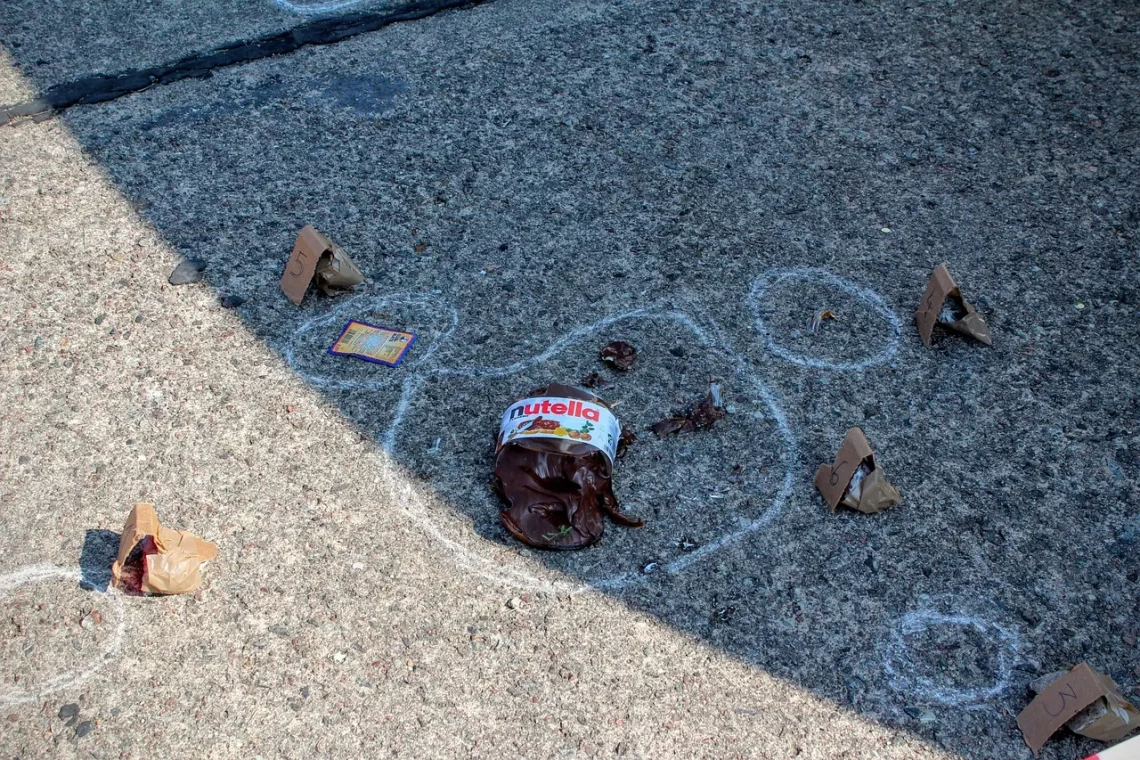
The Shocking Truth Behind Autopsy Photos of Bonnie and Clyde
The story of Bonnie and Clyde has captivated the public imagination for generations. These notorious outlaws became symbols of rebellion during a tumultuous time in American history. Their daring bank heists, thrilling escapes, and tragic end have been immortalized in films, songs, and literature. Yet, beyond the glamour and romanticism often associated with their lives, lies a grim reality that few dare to confront—their violent demise and the subsequent autopsy photos that document it.
These images serve as a stark reminder of the consequences of a life steeped in crime and violence. They evoke a range of emotions, from shock and horror to morbid curiosity. Autopsy photos, in particular, have a unique ability to bring the reality of death into sharp focus, stripping away the myths and legends that often surround figures like Bonnie and Clyde. As society grapples with the fascination surrounding these images, it raises profound questions about morality, celebrity, and the human condition.
In this exploration, we delve into the unsettling world of autopsy photos, examining their impact on our understanding of Bonnie and Clyde and the broader implications for how we view crime and punishment in modern culture.
The Role of Autopsy Photos in Public Perception
Autopsy photos have a complex role in shaping public perception, particularly when it comes to infamous figures like Bonnie and Clyde. These images serve not just as a record of death, but also as a tool for storytelling. They can evoke sympathy, disgust, or even admiration, depending on the viewer’s perspective. In the case of Bonnie and Clyde, the gruesome nature of their autopsy photos contrasts sharply with the glamour often portrayed in Hollywood adaptations of their lives.
The visceral impact of these photos can challenge the romanticized narratives that surround criminal figures. Instead of seeing them as glamorous outlaws, the autopsy images force viewers to confront the stark reality of their violent end. This dissonance can provoke a deeper examination of the choices that led them to such a tragic fate. In a society that often glorifies rebellion and anti-heroism, autopsy photos serve as a sobering reminder of the consequences of living outside the law.
Moreover, the circulation of these images has evolved with the rise of media and technology. In the past, such photos were primarily accessible to law enforcement and medical professionals. However, with the advent of the internet and social media, they have become more widely available, often sparking debate about ethics and morality. Should such graphic images be shared? Do they serve a purpose beyond mere shock value? These questions continue to resonate in discussions about crime, justice, and the public’s right to know.
The fascination with autopsy photos often extends beyond curiosity about the individual depicted. For many, it becomes a broader commentary on society’s relationship with crime and punishment. The public’s obsession with figures like Bonnie and Clyde can be seen as a reflection of our own societal values and the narratives we choose to embrace. The autopsy photos challenge us to confront the darker aspects of our fascination with fame, rebellion, and the ultimate price of a life lived on the edge.
The Historical Context of Bonnie and Clyde
Understanding the historical context of Bonnie and Clyde’s lives is essential to appreciating the significance of their autopsy photos. Their story unfolds during the Great Depression, a time marked by widespread economic hardship and social upheaval. Many Americans were struggling to make ends meet, and the allure of rebellion against an oppressive system was strong. Bonnie and Clyde emerged as folk heroes to some, embodying the spirit of resistance against an unjust world.
As they traveled across the Midwest, they became infamous for their daring bank heists and the violent confrontations that often followed. Their exploits captured the attention of the media, and they quickly became symbols of a restless generation. The public’s fascination with their story was fueled by sensationalized newspaper reports and the burgeoning world of cinema. The line between fact and fiction blurred, as their escapades were romanticized in the press.
The tragic end of Bonnie and Clyde, marked by their ambush and subsequent deaths, is a pivotal moment in their narrative. The autopsy photos serve as a grim counterpoint to the romantic tales spun by the media. They present an unfiltered view of the consequences of a life of crime, challenging the narratives that glorify their exploits. The stark reality depicted in these images serves as a reminder that the allure of rebellion often comes with a steep price.
In examining the historical context, we also see how Bonnie and Clyde’s story reflects broader societal themes. Their lives and deaths raise questions about justice, morality, and the nature of celebrity. They became cautionary tales, embodying the dangers of living outside societal norms. The autopsy photos encapsulate this reality, forcing us to confront the consequences of their choices in a way that transcends the mythologized versions of their lives.
The Ethics of Sharing Autopsy Photos
The ethics surrounding the sharing of autopsy photos is a contentious issue that elicits strong opinions. On one hand, some argue that these images serve an important purpose in educating the public about the realities of violence, crime, and mortality. They can provide a stark reminder of the consequences of criminal behavior, potentially deterring others from following a similar path. In this view, autopsy photos can be seen as a necessary evil in the pursuit of truth.
Conversely, there are compelling arguments against the public dissemination of such graphic images. Critics contend that sharing autopsy photos can desensitize viewers to violence and death, reducing human lives to mere spectacles. The potential for exploitation is significant, as these images can be sensationalized for entertainment value rather than serving an educational purpose. This raises ethical questions about the dignity of the deceased and the impact on their families, who may be forced to relive their trauma through public scrutiny.
Furthermore, the advent of social media has complicated the landscape of sharing such images. What was once confined to medical professionals and law enforcement is now easily accessible to anyone with an internet connection. The rapid spread of these images can lead to a culture of voyeurism, where the line between education and exploitation becomes increasingly blurred.
Ultimately, the decision to share autopsy photos should be approached with caution and respect. While they can provide valuable insights into the realities of crime and mortality, it is essential to consider the potential impact on viewers and the families of the deceased. Striking a balance between education and ethical responsibility is crucial in navigating this complex issue.
The Cultural Impact of Bonnie and Clyde’s Legacy
The legacy of Bonnie and Clyde extends far beyond their criminal exploits and tragic deaths. They have become cultural icons, representing a complex interplay of rebellion, love, and the consequences of a life lived on the fringes of society. Their story has inspired countless adaptations in film, literature, and music, each contributing to the mythology surrounding their lives.
The romanticized portrayal of Bonnie and Clyde often overshadows the darker aspects of their story. They are frequently depicted as star-crossed lovers, united in their defiance against society. This narrative resonates with the public’s fascination with outlaws and anti-heroes, reflecting our desire to celebrate those who challenge authority. However, the autopsy photos serve as a sobering counter-narrative, reminding us that their lives were ultimately marked by violence and tragedy.
In popular culture, Bonnie and Clyde’s story has been reinterpreted through various lenses, from glamorized portrayals in films to more nuanced explorations of their motivations and the societal conditions that shaped their lives. This multifaceted legacy invites ongoing discussions about morality, justice, and the nature of fame. The autopsy photos add an important dimension to this conversation, grounding their story in the harsh reality of their choices.
Ultimately, Bonnie and Clyde’s legacy challenges us to confront our own values and perceptions of crime and punishment. Their story serves as a reminder that the allure of rebellion comes with consequences that extend far beyond the individual. As we navigate the complexities of their legacy, it is essential to consider the broader implications for our understanding of fame, morality, and the human experience.
In conclusion, the autopsy photos of Bonnie and Clyde offer a chilling glimpse into the consequences of their lives, challenging the romanticized narratives often associated with their story. As we reflect on their legacy, we must grapple with the ethical considerations surrounding the sharing of such images and the cultural impact they continue to have on society.
This article is not intended as medical advice. For any health-related issues, please consult a qualified healthcare professional.




